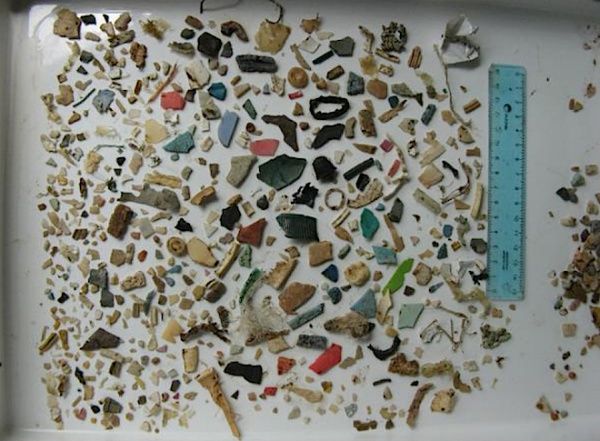
Pictured above are the stomach contents of a juvenile sea turtle accidentally captured off the coast of Argentina.Via Wired, who credits the image to Victoria González Carman. [H/T to Andy.]
...About 0.25 percent of all plastic ends up in the ocean. That might not sound like much, but humanity produces about 260 million tons of plastic a year. Tiny fractions add up fast. Oceanic plastic is pulled into the center of rotating currents, or gyres, where it doesn’t degrade, but breaks into smaller and smaller pieces. Some pieces end up in plankton and algae, or drift to the ocean floor. Others are mistaken for food by turtles.
The phenomenon is described in a new research review (pdf) published by the Global Sea Turtle Network and spotlighted by the fifth International Marine Debris Conference, now ongoing in Honolulu, Hawaii.
One anecdote in the article, written by biologists Wallace Nichols of the California Academy of Science and the University of British Columbia’s Colette Wabnitz, stands out. "Relief of gastrointestinal obstruction of a green turtle off Melbourne beach, Florida, resulted in the animal defecating 74 foreign objects over a period of a month, including four types of latex balloons, different types of hard plastic, a piece of carpet-like material, and two 2- to 4-mm tar balls," they wrote.
Related Reading: So much plastic and so hard to avoid using it: "In 1960, the average American consumed roughly 30 pounds of plastic a year. Now it's up to 300, [author Susan Freinkel] found."




Shakesville is run as a safe space. First-time commenters: Please read Shakesville's Commenting Policy and Feminism 101 Section before commenting. We also do lots of in-thread moderation, so we ask that everyone read the entirety of any thread before commenting, to ensure compliance with any in-thread moderation. Thank you.
blog comments powered by Disqus